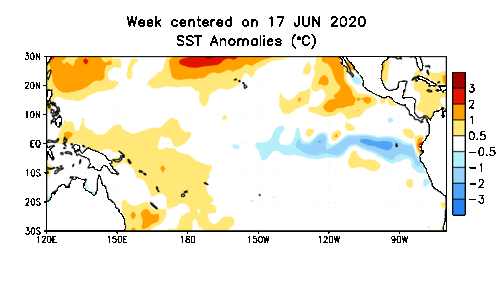La Niña advisory issued; snowy winter ahead for Minnesota?
La Niña events statistically favor rigorous winters for Minnesota

Tropical Pacific SST departures from average show a cooling trend (blue shades) in the tropical Pacific Ocean.
NOAA
Go Deeper.
Create an account or log in to save stories.
Like this?
Thanks for liking this story! We have added it to a list of your favorite stories.


